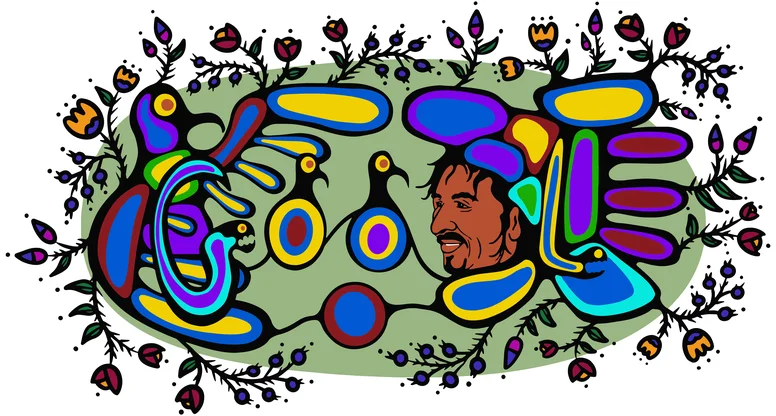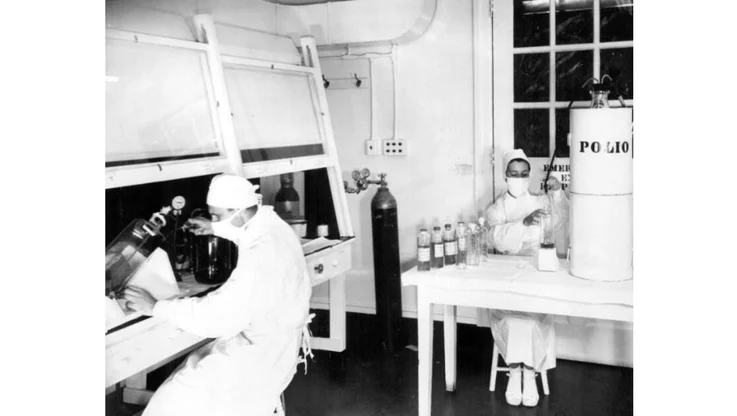Meet Canada’s Group of Seven
Discover the Algonquin school, the most important art movement you’ve never heard of!
It’s a century on from a defining moment in Canada’s artistic history. The founding of the Group of Seven in 1920 saw the Canadian landscape, and Canadian painting, celebrated on its own unique merits like never before.
Taking inspiration from Post Impressionist European art - maybe particularly Vincent Van Gogh - the group invented a uniquely Canadian voice, singing Canada in color for the world to hear.
The McMichael Canadian Art Collection boasts a significant collection of the Group’s work. Six of the members are even buried here! The executive director Ian Dejardin explains their importance: “In May 1920, seven artists in Toronto came together as a group to exhibit a bright, colourful modern style of painting.”
“The Group of Seven set out to represent their vast country in a new, vibrant visual language, ultimately derived from Post-Impressionism but uniquely Canadian.”
“Though initially reviled, their ultimate success was such that they have dominated the development of art in Canada ever since, and many Canadians see their country through the Group’s eyes to this day.”
Emily Carr - the pioneering artist whose eye for light as a vehicle for form was the first proper instance of Post-Impressionist influence in Canadian painting - and the landscape painter Tom Thomson were important precedents for the Group of Seven, but are not usually included in the list of core members.
Thomson, it’s safe to assume, would have been a member but for the fact that he died during a canoeing trip (under circumstances which remain disputed) before the forming of the group. Curiously, there are 10 painters in all who are considered Group of Seven members.
Scroll on to meet them all…
Franklin Carmichael
Carmichael worked as an illustrator, which may go some way to explaining the geometric layers, the immediacy of visual communication, in his paintings.
He worked mainly in watercolors, but also painted his beloved Ontario landscape in luscious oils, such as this autumnal view.
Carmichael was the group’s youngest founding member and a bit of an outsider (look at this cubist/futurist experiment, for example!), but became a defining voice in Canadian art throughout his career.
A.J.Casson
Keeping the youthful vibe alive in the group was the even younger A.J. Casson, who joined later at Carmichael’s request - the eighth member of the seven.
Casson’s work celebrates the landscapes and the forests of Ontario, but also the manual touch of human labor. His paintings work at an intersection between Post Impressionist brushstrokes and more structural geometry, which he reads into the natural and human world.
Lionel LeMoine FitzGerald
LeMoine FitzGerald wanted to “make the picture a living thing”. He credits time spent on his maternal Grandmother’s farm with influencing his work. He remembers that “roaming through the woods and over the fields and the vivid impressions of those holidays inspired many drawings and paintings of a later date”.
There’s something of the mid-career Van Gogh in the ruggedness of this harvester’s face, the gold of the corn. And perhaps the echoes of Millet’s The Sower (1850) are obvious, a painting which had a profound influence on North American culture (Walt Whitman was a big fan!). LeMoine FitzGerald was less interested in making the Group’s work uniquely Canadian and nationalist, so wouldn’t have wanted to move away from their European influences quite as much as the other members.
Lawren S. Harris
Clouds and snow and mountainous shapes were the order of the day for Harris, whose work strayed as far as being abstract in form, and as north as Canada’s arctic landscapes in setting.
This island, set into the middle of a northern lake as an independent body, is partially framed and obscured by the dividing lines of the foreground branches. Similarly, Harris saw the various framing devices and rubrics of the art world as obscuring a work’s purity. He attempted to cut his paintings free of time and place by refusing to sign or date them, wanting the pictures to exist and be judged purely on their own fundamental merit.
Edwin Holgate
Holgate is singular amongst the group for being primarily known as a portrait painter. He was vastly influential in the Montreal scene, and painted everyone from cellists within closely-observed interiors to female nudes en plein air.
His close observation of human expression, and his eye for the universal within the domestic, set him apart from the other members of the group.
A.Y. Jackson
Bridging Montreal and Toronto, Jackson was instrumental in binding together the artists from these two major cities and therefore consolidating Canadian painting as a national movement. He taught at the Banff School of Fine Arts in the 1940s and took up residence at the McMichael Gallery later.
Jackson managed to travel to Europe and back on a cattle-boat! This trip influenced his Neo-Impressionist style, to which he brought a verve which was all his own.
Frank Johnston
A founding member, Johnston only exhibited with the Group of Seven in their first show at the then-named Art Gallery of Toronto.
His earlier landscapes are interpretive and layered, recalling the geometric trees and dividing lines of Paul Nash. Johnston later focused on realistically showing the effects of light on water and snow.
Arthur Lismer
Ever heard of ‘dazzle camouflage’? It was a form of weird and sort-of wonderful paint-job applied to the hulls of military warships in World War I in order to make it difficult for the enemy to judge the ship’s distance when targeting. Strangely, the technique operates by making the ships more visible, but unsurely placed. Arthur Lismer is perhaps best known for his paintings of these ‘razzle dazzle’ boats.
His fascination with sight, distance, light, and their strange intercommingling also influenced his paintings of the Canadian landscape, in which shape and space become mutable and changeable.
J.E.H MacDonald
Born in Durham in North East England, MacDonald moved to Ontario with his family in 1887, at the age of 14, and began training as a painter that very year.
Like many of the Group of Seven, MacDonald worked as a commercial designer and artist, but was also heavily influenced by Post Impressionist styles and mood. These combined to form his rich, massy treatment of shape and color - owing a lot to Van Gogh - which was originally dismissed as “incoherent” by contemporary critics.
Frederick Varley
Like Lismer and MacDonald, Varley was a native of the North of England. He moved from Sheffield to Canada in 1912 at Lismer’s suggestion (Lismer was also Sheffield-born).
Varley spent time as an official war painter, which initially imbued his paintings and his palette with a bleak feel. After the First World War, he seemed to relish the return to color in his works, which became more lush, deep, and rich.

